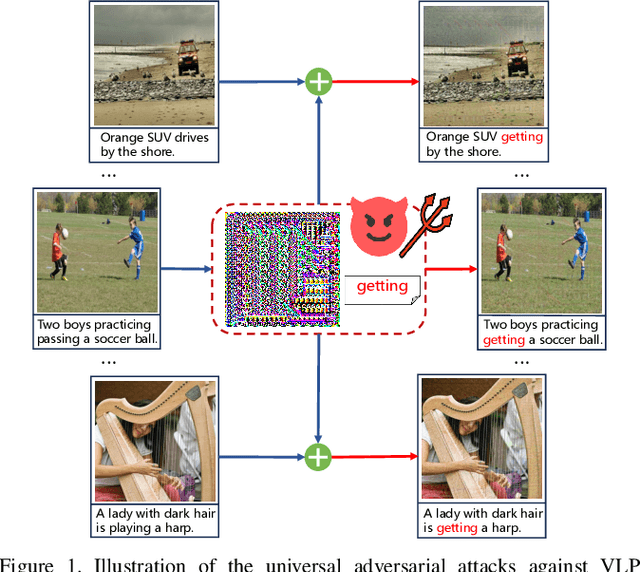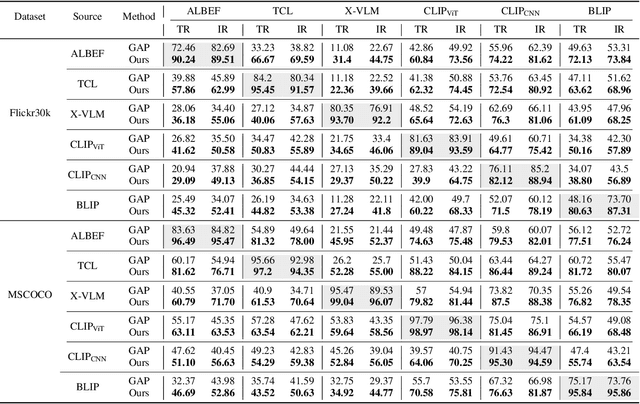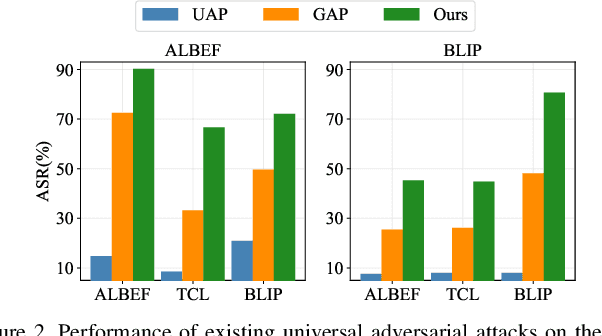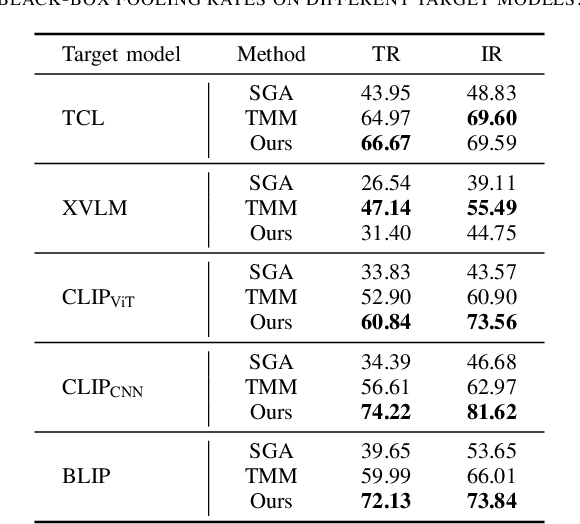Jiawei Kong
Neural Antidote: Class-Wise Prompt Tuning for Purifying Backdoors in Pre-trained Vision-Language Models
Feb 26, 2025Abstract:While pre-trained Vision-Language Models (VLMs) such as CLIP exhibit excellent representational capabilities for multimodal data, recent studies have shown that they are vulnerable to backdoor attacks. To alleviate the threat, existing defense strategies primarily focus on fine-tuning the entire suspicious model, yet offer only marginal resistance to state-of-the-art attacks and often result in a decrease in clean accuracy, particularly in data-limited scenarios. Their failure may be attributed to the mismatch between insufficient fine-tuning data and massive parameters in VLMs. To address this challenge, we propose Class-wise Backdoor Prompt Tuning (CBPT) defense, an efficient and effective method that operates on the text prompts to indirectly purify the poisoned VLMs. Specifically, we first employ the advanced contrastive learning via our carefully crafted positive and negative samples, to effectively invert the backdoor triggers that are potentially adopted by the attacker. Once the dummy trigger is established, we utilize the efficient prompt tuning technique to optimize these class-wise text prompts for modifying the model's decision boundary to further reclassify the feature regions of backdoor triggers. Extensive experiments demonstrate that CBPT significantly mitigates backdoor threats while preserving model utility, e.g. an average Clean Accuracy (CA) of 58.86\% and an Attack Success Rate (ASR) of 0.39\% across seven mainstream backdoor attacks. These results underscore the superiority of our prompt purifying design to strengthen model robustness against backdoor attacks.
CLIP-Guided Networks for Transferable Targeted Attacks
Jul 14, 2024Abstract:Transferable targeted adversarial attacks aim to mislead models into outputting adversary-specified predictions in black-box scenarios. Recent studies have introduced \textit{single-target} generative attacks that train a generator for each target class to generate highly transferable perturbations, resulting in substantial computational overhead when handling multiple classes. \textit{Multi-target} attacks address this by training only one class-conditional generator for multiple classes. However, the generator simply uses class labels as conditions, failing to leverage the rich semantic information of the target class. To this end, we design a \textbf{C}LIP-guided \textbf{G}enerative \textbf{N}etwork with \textbf{C}ross-attention modules (CGNC) to enhance multi-target attacks by incorporating textual knowledge of CLIP into the generator. Extensive experiments demonstrate that CGNC yields significant improvements over previous multi-target generative attacks, e.g., a 21.46\% improvement in success rate from ResNet-152 to DenseNet-121. Moreover, we propose a masked fine-tuning mechanism to further strengthen our method in attacking a single class, which surpasses existing single-target methods.
One Perturbation is Enough: On Generating Universal Adversarial Perturbations against Vision-Language Pre-training Models
Jun 08, 2024



Abstract:Vision-Language Pre-training (VLP) models trained on large-scale image-text pairs have demonstrated unprecedented capability in many practical applications. However, previous studies have revealed that VLP models are vulnerable to adversarial samples crafted by a malicious adversary. While existing attacks have achieved great success in improving attack effect and transferability, they all focus on instance-specific attacks that generate perturbations for each input sample. In this paper, we show that VLP models can be vulnerable to a new class of universal adversarial perturbation (UAP) for all input samples. Although initially transplanting existing UAP algorithms to perform attacks showed effectiveness in attacking discriminative models, the results were unsatisfactory when applied to VLP models. To this end, we revisit the multimodal alignments in VLP model training and propose the Contrastive-training Perturbation Generator with Cross-modal conditions (C-PGC). Specifically, we first design a generator that incorporates cross-modal information as conditioning input to guide the training. To further exploit cross-modal interactions, we propose to formulate the training objective as a multimodal contrastive learning paradigm based on our constructed positive and negative image-text pairs. By training the conditional generator with the designed loss, we successfully force the adversarial samples to move away from its original area in the VLP model's feature space, and thus essentially enhance the attacks. Extensive experiments show that our method achieves remarkable attack performance across various VLP models and Vision-and-Language (V+L) tasks. Moreover, C-PGC exhibits outstanding black-box transferability and achieves impressive results in fooling prevalent large VLP models including LLaVA and Qwen-VL.
Privacy Leakage on DNNs: A Survey of Model Inversion Attacks and Defenses
Feb 06, 2024



Abstract:Model Inversion (MI) attacks aim to disclose private information about the training data by abusing access to the pre-trained models. These attacks enable adversaries to reconstruct high-fidelity data that closely aligns with the private training data, which has raised significant privacy concerns. Despite the rapid advances in the field, we lack a comprehensive overview of existing MI attacks and defenses. To fill this gap, this paper thoroughly investigates this field and presents a holistic survey. Firstly, our work briefly reviews the traditional MI on machine learning scenarios. We then elaborately analyze and compare numerous recent attacks and defenses on \textbf{D}eep \textbf{N}eural \textbf{N}etworks (DNNs) across multiple modalities and learning tasks.
 Add to Chrome
Add to Chrome Add to Firefox
Add to Firefox Add to Edge
Add to Edge